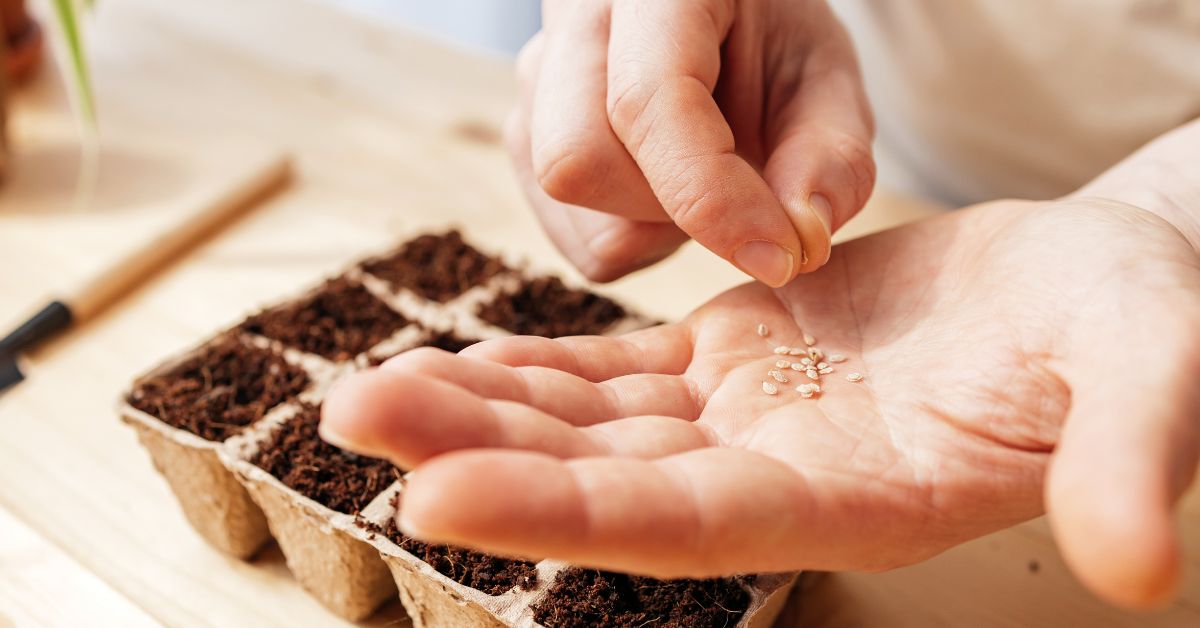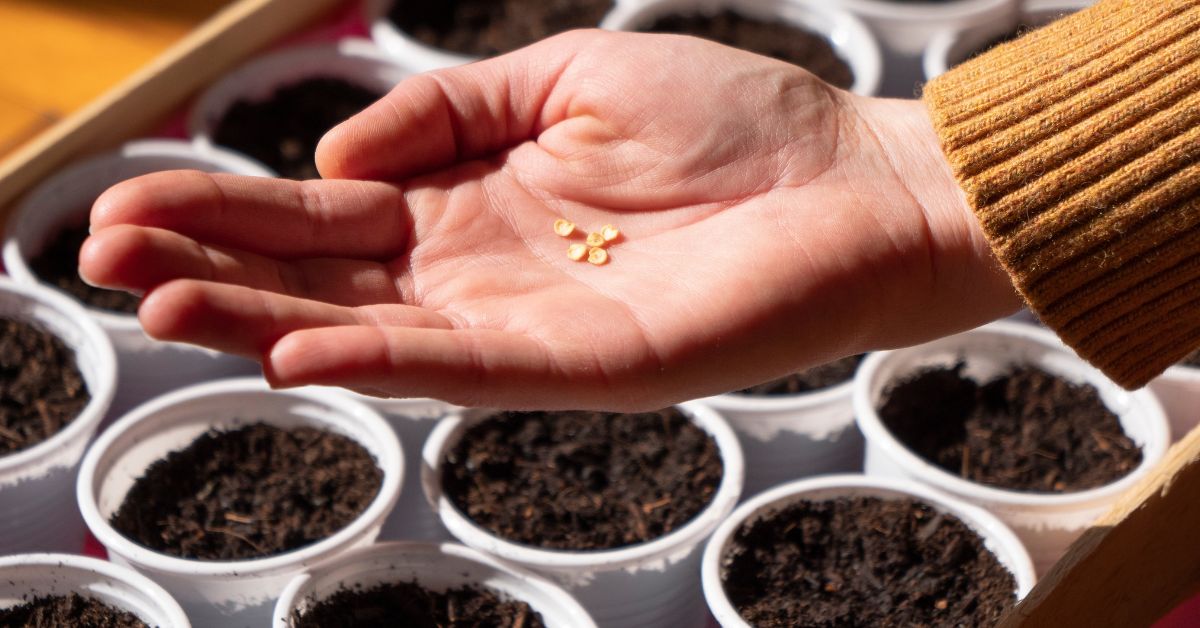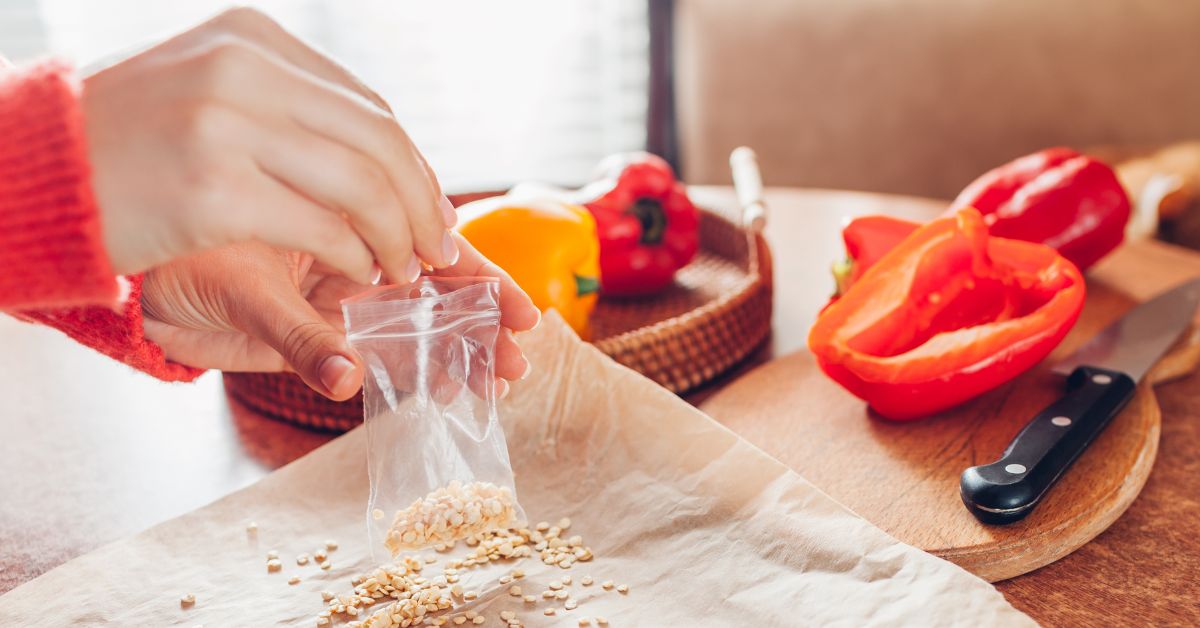How Balcony Gardeners & Farmers Are Building Seed Banks To Keep India’s Biodiversity Alive
Have you ever thought about the tiny power held in a single seed? In today’s fast-paced, concrete-dominated world, seed banks are like time capsules — quiet guardians preserving nature’s diversity for future generations. Starting one at home isn’t just about gardening. Instead, it is about taking a personal stand for biodiversity and resilience. And the best part? It doesn’t take acres of soil, just some space, curiosity, and a touch of patience.
How to prepare your seed bank
Choose strong plants
Start with healthy, open-pollinated plants — best if they’re local or traditional varieties like okra, tomatoes, chillies, or marigolds.
Let seeds fully ripen
Wait for the fruit or pods to mature on the plant before harvesting. Seeds from unripe pods may not germinate well.
 Seed banks are like time capsules — quiet guardians preserving nature’s diversity for future generations
Seed banks are like time capsules — quiet guardians preserving nature’s diversity for future generations
Clean and dry thoroughly
Remove any debris, rinse if needed, and dry seeds in the shade until they snap crisply. Proper drying is key to preventing mould.
Store smartly
Use paper envelopes for short-term storage or airtight glass jars for long-term storage. Label everything with the plant name and collection date.
Keep them cool and dry
Humidity is the biggest enemy. A cool, dark cabinet or shelf with low moisture works wonders.
The DOs and DON’Ts of seed banking
Dos:
- Label every seed batch with the plant name, variety, and collection date.
- Harvest seeds only from healthy, mature, open-pollinated plants.
- Dry seeds thoroughly in a cool, shaded, and well-ventilated area.
- Store seeds in airtight jars or envelopes in a cool, dry, dark place.
- Test germination by sprouting a few seeds before sowing the rest.
- Share and exchange seeds with fellow gardeners or community groups.
 Residents in Indian cities are collecting seeds at home to cultivate the native species of chillis, tomatoes, basil, bhindi, and white brinjal.
Residents in Indian cities are collecting seeds at home to cultivate the native species of chillis, tomatoes, basil, bhindi, and white brinjal.
Don’ts:
- Mixing old and new seeds without proper labelling — they might have different viability.
- Using seeds from hybrid plants, as they often won’t grow true to the parent.
- Exposing seeds to direct sunlight or moisture it can damage their viability.
- Keeping seeds in humid or warm spots like near the stove, bathroom, or sunny window.
- Assuming all stored seeds will grow, germination rates decline over time.
- Hoard seeds without rotation or usage—they lose vitality if kept too long.
This practical approach helps you not only store seeds safely but also build a sustainable cycle of growing, saving, and sharing, just like many eco-conscious gardeners across India.
Indian tales of seed-banking in action
1. Residents in Bhavdan, Maharashtra and Deccan are collecting seeds at home to preserve and cultivate the native species of chillis, tomatoes, basil, bhindi, and white brinjal.
2. In drought-prone regions like Kadapa and Anantapuramu, women-led seed banks store resilient traditional rice and vegetable varieties. Cooperative models even certify and sell seeds such as groundnut TCGS-1694 (“visishta”), enabling fairer prices and reducing chemical usage.
3. In Nayagarh, Raisar Indigenous Seed Bank saves climate-resilient cowpea landraces—like Ranga Baragadi and Tula Baragadi — traditionally adapted to heat, drought, and poor soil. Cowpea even improves soil fertility through nitrogen fixation.
4. Since the 1980s, chaired by Vandana Shiva, Navdanya has helped establish over 150 community seed banks across 22 states, conserving more than 4,000 rice varieties and promoting farmer-led, organic farming practices
Why these stories matter
These aren’t just isolated efforts—they feed into a powerful ripple effect. Seed banks in India are:
- Reviving native biodiversity and culturally significant crops
- Reducing farmer dependency on costly commercial seeds
- Building climate resilience with drought- and pest-tolerant varieties
- Empowering communities, especially women, as custodians of genetic heritage
 Your small jar of seeds can make a big difference to your garden, your neighbourhood, and our planet’s biodiversity.
Your small jar of seeds can make a big difference to your garden, your neighbourhood, and our planet’s biodiversity.
Get started with your collection
- Pick a few plants from your balcony or garden, like chillies, tomatoes, and basil.
- Let them fruit fully, harvest the seeds, clean and dry them.
- Store smartly and label everything.
- Connect with local groups, fellow gardeners, or community libraries for seed exchange.
Your small jar of seeds can make a big difference to your garden, your neighbourhood, and our planet’s biodiversity.
Edited by Vidya Gowri
News